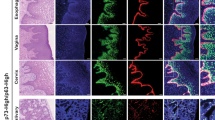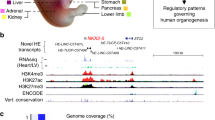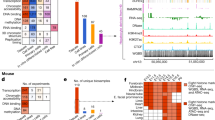Abstract
The gene responsible for multiple endocrine neoplasia type 1 (MEN1), a heritable predisposition to endocrine tumours in man, has recently been identified. Here we have characterized the murine homologue with regard to cDNA sequence, genomic structure, expression pattern and chromosomal localisation. The murine Men1 gene spans approximately 6.7 kb of genomic DNA and is comprised of 10 exons with similar genomic structure to the human locus. It was mapped to the pericentromeric region of mouse chromosome 19, which is conserved with the human 11q13 band where MEN1 is located. The predicted protein is 611 amino acids in length and overall is 97% homologous to the human orthologue. The 45 reported MEN1 mutations which alter or delete a single amino acid in human all occur at conserved residues, thereby supporting their functional significance. Two transcripts of approximately 3.2 and 2.8 kb were detected in both embryonal and adult murine tissues, resulting from alternative splicing of intron 1. By RNA in situ hybridization and Northern analysis the spatiotemporal expression pattern of Men1 was determined during mouse development. Men1 gene activity was detected already at gestational day 7. At embryonic day 14 expression was generally high throughout the embryo, while at day 17 the thymus, skeletal muscle, and CNS showed the strongest signal. In selected tissues from postnatal mouse Men1 was detected in all tissues analysed and was expressed at high levels in cerebral cortex, hippocampus, testis, and thymus. In brain the menin protein was detected mainly in nerve cell nuclei, whereas in testis it appeared perinuclear in spermatogonia. These results show that Men1 expression is not confined to organs affected in MEN1, suggesting that Men1 has a significant function in many different cell types including the CNS and testis.
This is a preview of subscription content, access via your institution
Access options
Subscribe to this journal
Receive 50 print issues and online access
$259.00 per year
only $5.18 per issue
Buy this article
- Purchase on Springer Link
- Instant access to full article PDF
Prices may be subject to local taxes which are calculated during checkout
Similar content being viewed by others
Author information
Authors and Affiliations
Rights and permissions
About this article
Cite this article
Stewart, C., Parente, F., Piehl, F. et al. Characterization of the mouse Men1 gene and its expression during development. Oncogene 17, 2485–2493 (1998). https://doi.org/10.1038/sj.onc.1202164
Received:
Revised:
Accepted:
Published:
Issue Date:
DOI: https://doi.org/10.1038/sj.onc.1202164
Keywords
This article is cited by
-
Tumor suppressor menin is required for subunit-specific nAChR α5 transcription and nAChR-dependent presynaptic facilitation in cultured mouse hippocampal neurons
Scientific Reports (2017)
-
Two proteolytic fragments of menin coordinate the nuclear transcription and postsynaptic clustering of neurotransmitter receptors during synaptogenesis between Lymnaea neurons
Scientific Reports (2016)
-
Menin and bone metabolism
Journal of Bone and Mineral Metabolism (2012)
-
Ribozyme-mediated compensatory induction of menin-oncosuppressor function in primary fibroblasts from MEN1 patients
Cancer Gene Therapy (2010)
-
Comparison of nonsense-mediated mRNA decay efficiency in various murine tissues
BMC Genetics (2008)



